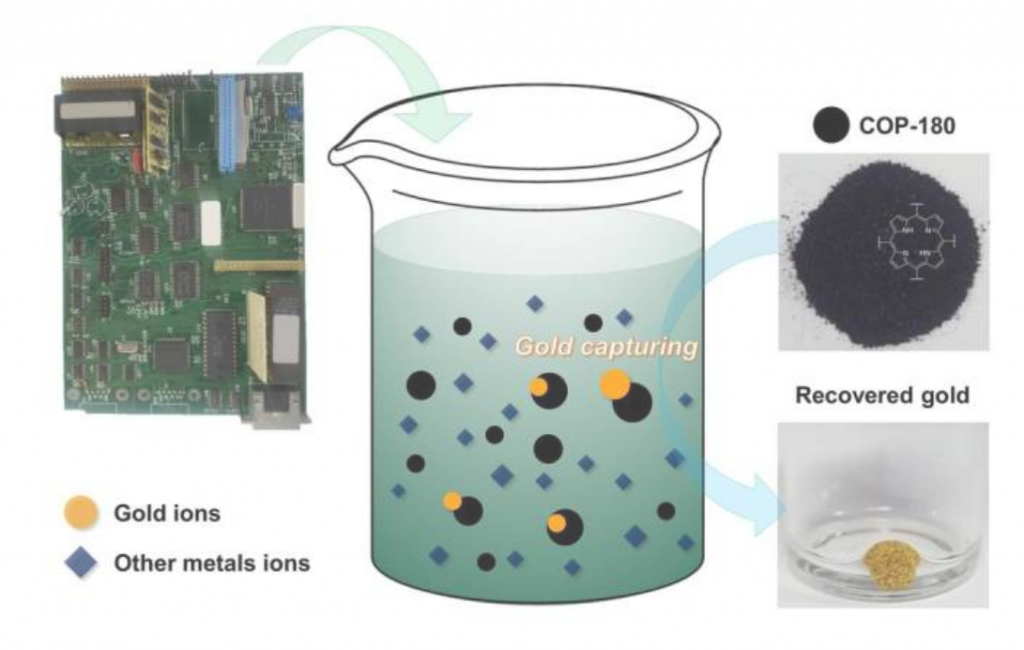An international team of researchers, lead by Yeongran Hong of the Korea Advanced Institute of Science and Technology, have demonstrated that a type of organic compound called a porphyrin could be used to retrieve precious metals, such as gold, from electronic waste in an effective, simple, and relatively inexpensive manner. The researchers used porphyrins to create a sorbent–a type of material that can collect molecules of another substance through adsorption, absorption or ion exhance–called COP-180. This compound remains stable in the acidic solutions which are used to remove metals from circuit boards and video screens.
From an article by Bob Yirka on Phys.org: “Testing the polymer showed it to be efficient at sorbing platinum and unexpectedly highly efficient at sorbing gold. A closer look at both showed that platinum dispersed evenly in an acid solution but gold clumped, allowing the sorbent to gather more of it than expected. Testing on real-world e-waste showed it was possible to collect 64 dollars’ worth of gold using only a gram of the sorbent, which costs five dollars to make. The researchers note that the sorbent can also be reused, making it even more economical.”
See Yeongran Hong et al. Precious metal recovery from electronic waste by a porous porphyrin polymer, Proceedings of the National Academy of Sciences (2020). DOI: 10.1073/pnas.2000606117
See also New polymer easily captures gold extracted from e-waste.


